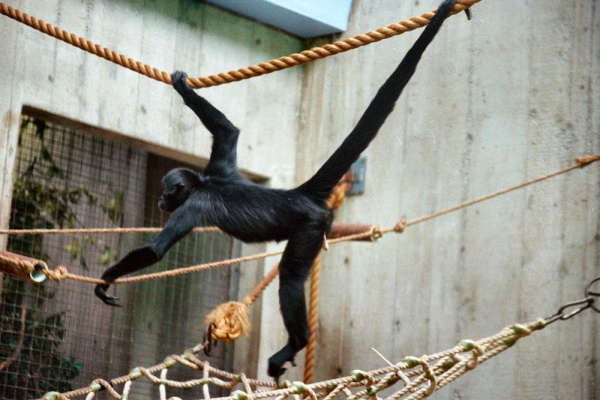Facts About Black-headed spider monkey
The black-headed spider monkey is a captivating New World primate that inhabits the forests of Central and South America, particularly in Colombia, Ecuador, and Panama. Scientists are still debating whether it should be classified as its distinct species or as a subspecies of Geoffroy's spider monkey. Presently, two subspecies are recognized: Ateles fusciceps fusciceps and Ateles fusciceps rufiventris.
The A. f. fusciceps subspecies resides in tropical and subtropical humid forests, ranging from 100 to 1,700 meters in elevation. Conversely, A. f. rufiventris prefers higher altitudes, between 2,000 and 2,500 meters, and can be found in dry forests, humid forests, and cloud forests. Visually, A. f. fusciceps features a black or brown body and head, whereas A. f. rufiventris is entirely black with a hint of white on its chin. These monkeys rank among the larger New World primates, with males weighing approximately 8.89 kilograms and females around 8.8 kilograms.
Black-headed spider monkeys are arboreal and diurnal, meaning they spend their days traversing the treetops through climbing and brachiation (swinging from branch to branch). During mating, females may spend up to three days with a single male or mate with multiple males. Following a gestation period of 226 to 232 days, the infants cling to their mother's back for the first 16 weeks and are weaned at approximately 20 months.
Regrettably, these monkeys are endangered due to hunting and habitat loss. Despite these threats, black-headed spider monkeys have been known to live over 24 years in captivity, offering a glimmer of hope for their conservation.

 Costa Rica
Costa Rica